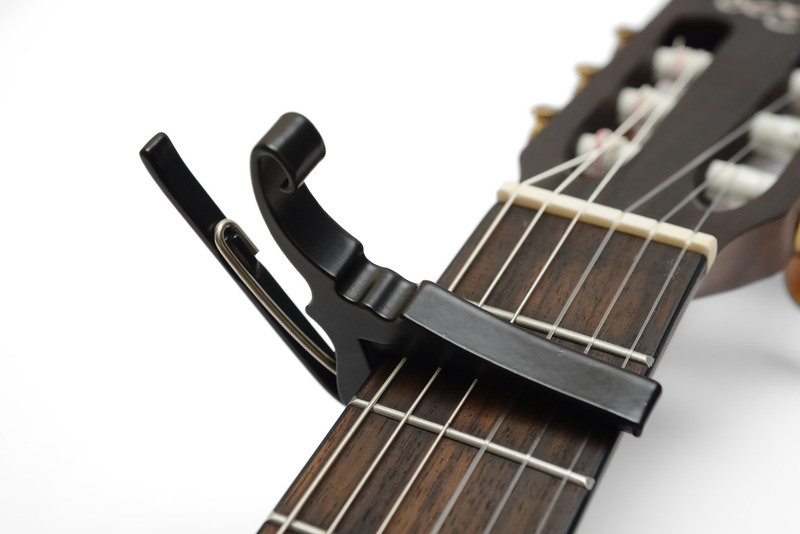 How many times have you heard a recording and played the chord chart with the recording only to realize that the chords sound totally different, even though you’re playing the same chords? Why does it sound different? It’s note because you suck, it’s because they are probably using a capo, cut capo or combination of both. Why use a capo? Here are three reasons:
How many times have you heard a recording and played the chord chart with the recording only to realize that the chords sound totally different, even though you’re playing the same chords? Why does it sound different? It’s note because you suck, it’s because they are probably using a capo, cut capo or combination of both. Why use a capo? Here are three reasons:
- Capos allow you to play songs in keyboard keys using simple chords. The two most popular keyboard keys are B-flat and E-flat. They are also the guitar players least favorite keys. Capos help you solve the problem. For instance, B-flat is the same as placing your capo on the third fret and playing using G chords. E-flat is capo first fret using D chords.
- Capos allow you to change keys quickly or to suit a singer’s vocal range. One of the ladies at our church leads worship in our midweek study and she regularly plays songs with a capo on the fifth or seventh fret using G chords. Capo five with G chords is playing in the key of D. I asked her why she doesn’t play in the key of C or D, and she replied that playing in the key of G is easier for her.
- Capos also allow you to create a different tone or sound to the song. No doubt each keys has it’s own unique sonic quality. It’s easy to create a droning sound in the key of E. It’s easy to make a guitar sound BIG in the key of G. The key of D has a unique sense of power behind it. But it’s hard to get the power of D when you’re playing in F, unless you use a capo fret three and play D chords. Now you can have the power of D in the key of F.
The short cut capo is unique in that you can create drop D tuning sound with just one capo. A cut capo only affects the A, D and G strings on the guitar. The other three strings are wide open. When I’m playing a song in the key of E, it’s pretty common for me to use a cut capo fret using two chords in the key of D and letting the open strings ring out, creating a unique drop D tuning sound. Another common sound is playing cut capo fret 4 using chords in the key of G. I use this when playing Chris Tomlin’s ‘How Great is Our God’ in the key of B. When I hit the C chord and let the strings ring out it’s a HUGE sound.
For the adventurous, I’ve experimented with using two capos. Standard capo free with a cut capo fret using D chords. This is actually the key of G, but the use of two capos gives me a drop D sound in the key of G.
For me, it’s one way to take a song that everyone knows and yet make it my own. Capos allow me to put my own unique spin on a song and sound really amazing as a guitar player…even though I’m using pretty basic chords.
Holland Davis is a teaching pastor, veteran worship leader, composer and author of a book entitiled “Let it Rise: A Manual for Worship”. He is the Senior Pastor of Calvary Chapel San Clemente and CEO of worshipsong.com. You can follow him on Twitter or Instagram @hollanddavis.





